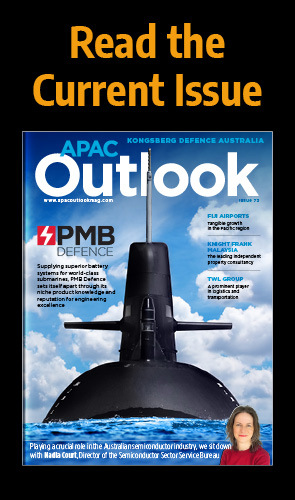Howard Yu, LEGO® Professor of Management and Innovation at the IMD Business School, explores Asia Pacific’s tech-driven travel industry and the increasing impacts of artificial intelligence.
THE AI-DRIVEN FUTURE OF ASIA PACIFIC TRAVEL
The biggest risk facing Asia Pacific’s (APAC) travel industry isn’t inflation or geopolitics – it’s invisibility.
As artificial intelligence (AI)-powered agents shape how trips are booked, only businesses visible to algorithms will stay in play.
Generative AI tools are already reshaping how travel is planned. Platforms such as Expedia Group’s Romie and Chinese-owned Manus AI let users input a single prompt and receive full itineraries in return. These systems analyse pricing, loyalty data, and preferences to optimise results.
Full automation is not there yet, but the shift is clear – trips will increasingly be built by bots, not browsed. In this model, only the discoverable will survive.
This is the future staring down the region’s airlines, hotel chains, cruise lines, and online travel platforms.
For this reason, I designed the IMD Future Readiness Indicator (IMD FRI) to put focus not simply on who’s performing today but highlight who is building the infrastructure, data, and strategic agility necessary to thrive tomorrow.
DOMINANCE OF AI PLANNING
For online travel agencies, the impact of AI could be existential if they do not adapt.
Platforms such as Trip.com and Booking.com have spent years, and in some cases decades, refining their front-end experience with personalised search filters, flash deals, loyalty hooks, and sleek checkouts.
However, the entire interface layer may soon be bypassed. As AI tools take on more of the planning process, the old habit of scrolling through dozens of options, comparing prices, and clicking through filters is already starting to fade.
Whilst many travellers still book this way, a growing number are turning to AI-driven assistants that do the legwork for them.
Data from Kantar shows that 40 percent of global travellers have already used AI to plan a trip, and 62 percent say they’re open to it.
This shift can have major implications. If platforms aren’t structured in a way that AI agents can easily access and understand – if content isn’t visible, prices aren’t machine-readable, or inventory isn’t indexed – then it won’t show up.

RISK TO AIRLINES
The disruption wrought by generative AI doesn’t stop with online travel.
For low-cost airlines, the risk is obvious. Their model relies on lowbase fares, with revenue generated through extras such as baggage, seat selection, and meals.
AI agents, built to optimise total cost, can parse the fine print and surface the true price. The margin gained through opacity starts to disappear, and with it, the pricing advantage.
For premium carriers such as Singapore Airlines and Cathay Pacific, the challenge is different but just as real. Loyalty programmes that reward long-term behaviour may lose influence if better redemption value or faster routing can be found elsewhere.
Hotels and cruise lines face the same issue. Points and perks matter less when booking decisions are driven by data. If a better-value option fits the brief, the AI agent selects it – brand affinity won’t enter the equation.
EMBRACING THE AI SHIFT
Some companies see opportunity in the shift. For instance, hotel giants such as Marriott and Hilton maintain a strong presence across the APAC region, supported by global loyalty programmes, extensive hotel networks, and the infrastructure to succeed.
H World Group, a major Chinese hotelier, ranks mid-table – 17th out of 33 companies – in the 2025 IMD FRI. This suggests there’s room to grow in areas including digital visibility, innovation, and international reach.
Marriott has introduced co-working lounges and rooftop bars at select APAC hotels, including the Las Palmas Rooftop Bar in Singapore, designed not just for comfort but to be photographed and shared.
In addition, Hilton actively partners with influencers across markets such as Thailand and South Korea, showcasing distinctive room features and hyper-local experiences.
These moments generate content – photos, reviews, videos – that boost visibility across platforms and shape how AI systems evaluate travel experiences. In a world where recommendations are driven by data, what gets posted often determines what gets picked.
This means that in the world ahead, traditional marketing will matter less, and shareable moments will matter more.
EMERGENCE OF APAC BRANDS
Amid the disruption, a few APAC-based and APAC-operating companies stand out.
Trip.com has been quicker than many of its competitors to adopt emerging technologies and test new business models, particularly in its home market of China. The company has rolled out AI-powered tools such as Trip Genie, which creates travel itineraries as well as curated recommendation engines, aimed at simplifying travel.
Whilst players such as Booking.com and Expedia Group are also investing heavily in AI, Trip.com’s pace of experimentation and product roll-out puts it amongst the most forward-leaning travel platforms globally.
Singapore Airlines, ranked 12th in the 2025 IMD FRI, continues to outperform regional peers with strong digital infrastructure, from AI-powered customer service to a highly shareable in-flight product.
In a world where what gets shared increasingly shapes what gets recommended, this kind of visibility matters.
In contrast, China Southern Airlines and Air China have faced a more uneven recovery. Both carriers were hit hard by losses caused by the COVID-19 pandemic and are still regaining financial ground.
China Southern Airlines has launched targeted digital initiatives, particularly in back-end operations, but broader consumer-facing innovation remains limited. Air China’s digital progress, meanwhile, is less visible.
Both airlines also remain heavily tied to the domestic market – an advantage during lockdowns, but now a constraint as growth shifts towards international, tech-driven travel.
IMPACTS OF THE US
Whilst AI dominates the long-term outlook, short-term turbulence comes from more traditional sources.
US outbound demand remains a key driver for APAC travel, particularly in high-spend segments such as luxury hotels and cruises. With US consumer confidence weakening, the risk to advance bookings is growing.
In February 2025, air travel spending fell 10 percent, whilst hotel spending dropped six percent according to figures from Bloomberg.
Major carriers including Delta and American Airlines have since lowered revenue forecasts, pointing to softer demand.
Geopolitical risks also loom. The US has floated the idea of expanding outbound travel restrictions, targeting certain countries – a move that could invite retaliation and reintroduce friction at borders.
For a region still recovering from pandemic-era mobility limits, this kind of disruption would be costly for APAC.
This is why financial resilience still matters. During the pandemic, the companies that endured were not only well-run, but they were also well-capitalised. This principle still holds true today.




























